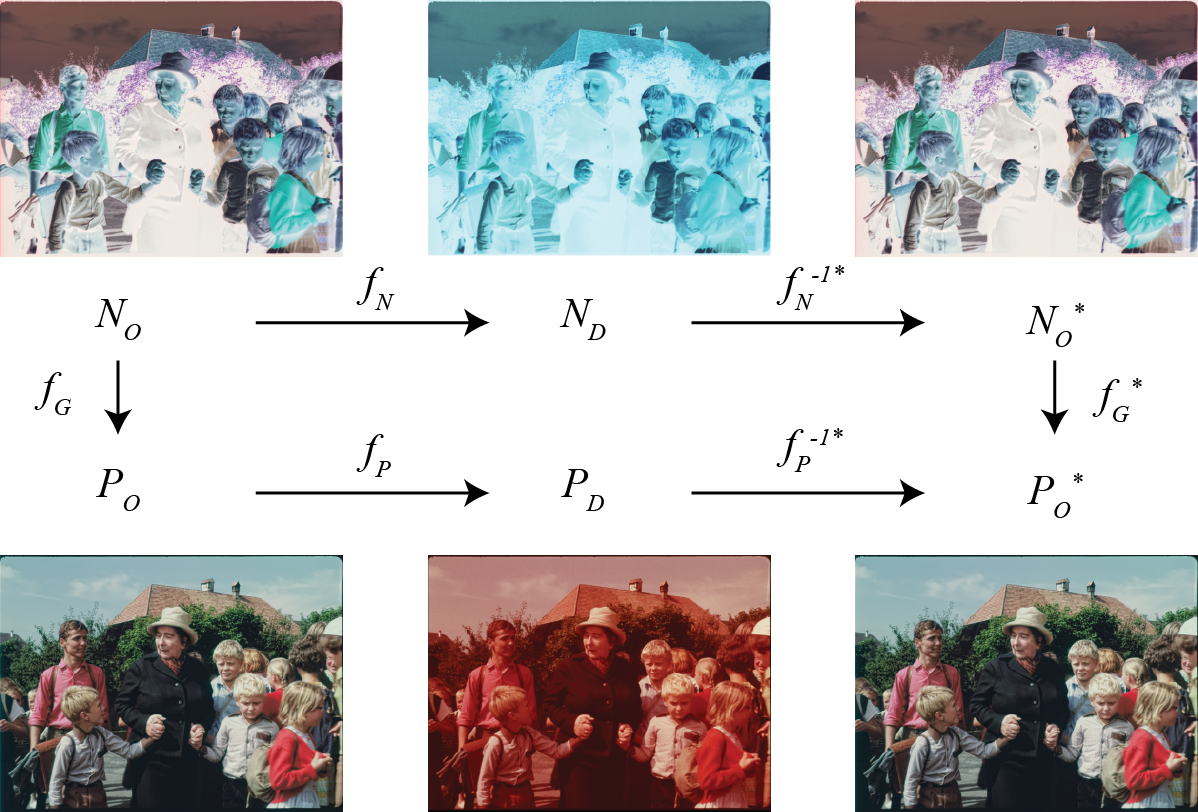Abstract

Digital restoration of film content that has historical value is crucial for the preservation of cultural heritage. Also, digital restoration is not only a relevant application area of various video processing technologies that have been developed in computer graphics literature but also involves a multitude of unresolved research challenges. Currently, the digital restoration workflow is highly labor intensive and often heavily relies on expert knowledge. We revisit some key steps of this workflow and propose semiautomatic methods for performing them. To do that we build upon state-of-the-art video processing techniques by adding the components necessary for enabling (i) restoration of chemically degraded colors of the film stock, (ii) removal of excessive film grain through spatiotemporal filtering, and (iii) contrast recovery by transferring contrast from the negative film stock to the positive. We show that when applied individually our tools produce compelling results and when applied in concert significantly improve the degraded input content. Building on a conceptual framework of film restoration ensures the best possible combination of tools and use of available materials.
Copyright Notice
The documents contained in these directories are included by the contributing authors as a means to ensure timely dissemination of scholarly and technical work on a non-commercial basis. Copyright and all rights therein are maintained by the authors or by other copyright holders, notwithstanding that they have offered their works here electronically. It is understood that all persons copying this information will adhere to the terms and constraints invoked by each author’s copyright. These works may not be reposted without the explicit permission of the copyright holder.